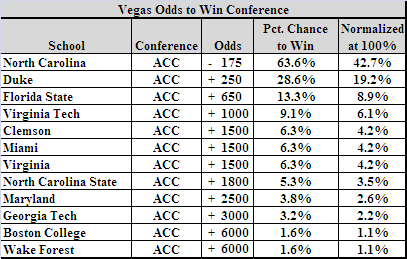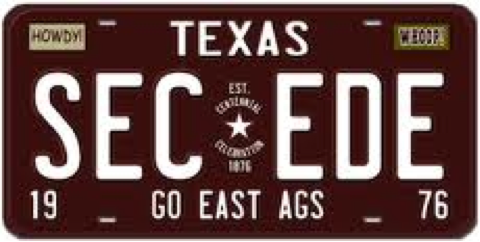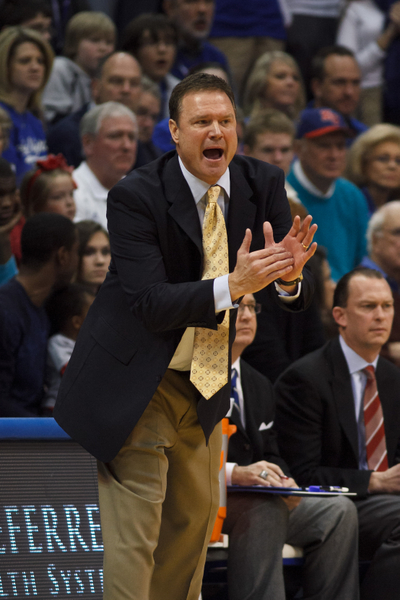Posted by rtmsf on October 27th, 2011
 Last week we examined the sixty or so major programs that Vegas feels is worth offering as action to win the 2011-12 national championship. Unsurprisingly, the top several teams in the preseason Coaches Poll — North Carolina, Kentucky, Ohio State, Duke, Syracuse — generally mimic the top several teams in terms of the odds Vegas is offering. The one stunning exception to that trend is Connecticut, whom the pollsters have listed among the few teams most likely to cut the nets down in New Orleans next April, but from whom the oddsmakers still aren’t seeing much value (+2000, or a 4.8% chance, as of now).
Last week we examined the sixty or so major programs that Vegas feels is worth offering as action to win the 2011-12 national championship. Unsurprisingly, the top several teams in the preseason Coaches Poll — North Carolina, Kentucky, Ohio State, Duke, Syracuse — generally mimic the top several teams in terms of the odds Vegas is offering. The one stunning exception to that trend is Connecticut, whom the pollsters have listed among the few teams most likely to cut the nets down in New Orleans next April, but from whom the oddsmakers still aren’t seeing much value (+2000, or a 4.8% chance, as of now).
This week we’ll take a step further into the odds and consider the probabilities that Vegas has assigned to each power conference team to win its regular season championship. These odds are by no means foolproof. In reviewing last year’s preseason tables of the same six leagues, only Pittsburgh in the Big East and Arizona in the Pac-10 were favorites that came into the money by March. The other four league favorites this time last year? Try Duke in the ACC (UNC), Baylor/Kansas State in the Big 12 (Kansas), Michigan State in the Big Ten (Ohio State), and Kentucky in the SEC (Florida). So while all of these favorites looked reasonable one year ago today, keep in mind that college basketball seasons have a tendency to work themselves out differently despite what the oddsmakers and pundits think.
Ed. note: These odds are published on The Greek as of October 27, 2011. If you’re unfamiliar with how futures odds work, +150 represents the amount of money a potential gambler would receive back if he placed a $100 wager on that team and it won. He would, in other words, win back 1.5 times his original wager. Those few teams sporting a negative odds notation (e.g., -175) represents a situation where someone would have to wager $175 to win back $100. Since the aggregate of futures odds are designed to add up to a figure much larger than 100% (removing the incentive to wager on every team), we’ve added a far right column normalizing the odds to a true 100% value for each conference.
ACC

Quick Thoughts on the ACC:
Read the rest of this entry »
| 2011-12 Season Preview, vegas odds
| Tagged: acc, alabama, arizona, arkansas, baylor, big 12, big east, big ten, billy kennedy, boston college, california, connecticut, duke, feature, frank haith, georgetown, indiana, kansas, kentucky, lebryan nash, louisville, mississippi st, missouri, north carolina, ohio st, pac-12, pittsburgh, purdue, sec, syracuse, texas, texas a&m, ucla, utah, virginia tech, wake forest, washington, wisconsin
Share this story



















































